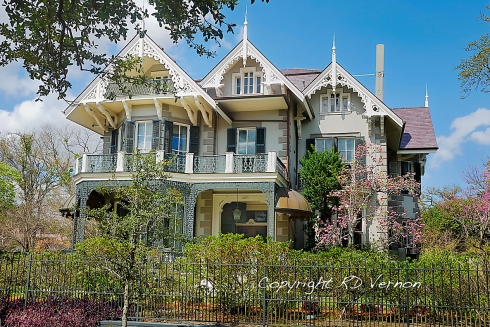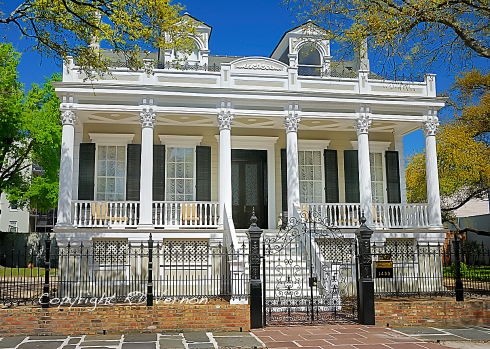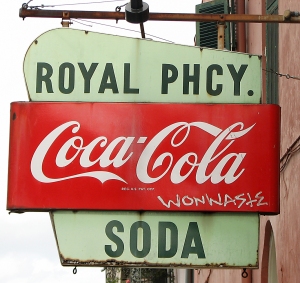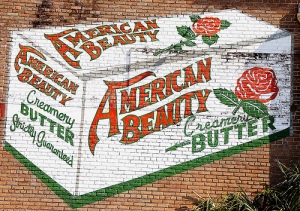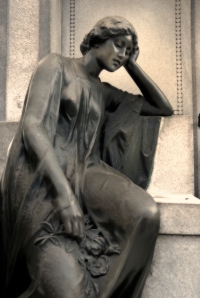Metairie Cemetery, in New Orleans, is one of those fascinating places that will capture your imagination even if you don’t have one! The tombs are very interesting and many are great examples of various types of architecture, which always provides for a great cemetery visit. On the other hand the tombs hold individuals and many of those individuals led distinguished and productive lives. Their stories are sometimes lost amongst the grand views of the tombs.
One of the most visited and photographed places in Metairie Cemetery stands near the rear of the older part of the cemetery. The outstanding Egyptian influences of the Brunswig Mausoleum are very worthy of attention. The pyramid mausoleum has attracted visitors for over a century. A woman and a sphinx figure stand on either side of bronze gates that seal the tomb and they have been photographed a million times. Those figures have become synonymous with the tomb , but what about the man that lends his name to this well known tomb – that man was Lucien Napoleon Brunswig.
Lucien Napoleon Brunswig was born in Montmedy, France, in 1854, and was educated at the College of Etain. Apparently Brunswig thought his future lay in the United States and he came to the U.S. in 1871. He found work as an apprentice to a U.S druggist. In 1875 Brunswig opened his own drug store in Atchison, Kansas. After a year of business he sold his drug store and moved to Fort Worth, Texas.
In Fort Worth Brunswig opened a new drug store that not only sold retail but also dealt with wholesale pharmaceuticals. Within 5 years the business was producing $350,000 in annual sales. Business took Lucien to many places and one of those places was Independence, Missouri. There he met and married Annie Mercer. The newly married couple made their home in Fort Worth and they soon added children.
In 1882, George Finlay, the owner of a well-established wholesale drug firm in New Orleans invited Brunswig to join him as a partner. Brunswig sold his Fort Worth business and joined Finlay in the firm of Finlay and Brunswig. In 1885 Finlay died and Lucien Brunswig took over the entire wholesale drug firm which then became L. N. Brunswig and Company. In 1887 he took on a partner by the name of F.W. Braun.
Lucien and Annie had 5 children – 3 girls and 2 boys. The year of 1892 became a pivotal year for Lucien N. Brunswig. That year marked the death of one of his young sons – a son who also bore the name of Lucien N. Brunswig. This death was a terrible blow to Annie Brunswig. The child’s death was too much for her to handle. She declined in health and within a month she too was dead.
Lucien Brunswig moved on with life. Prior to the death of his wife and child Brunswig had been looking toward the west. In 1887 Braun was dispatched to Los Angeles, California, and within a year a prosperous business was established. In 1890, while Brunswig was still in New Orleans, he sent Braun to San Diego to set up a branch office. In short order another prosperous branch office was operating under the name of F.W. Braun.
Braun believed that the future of his company was in the west. In 1903 Brunswig, and his family, which included his second wife and another child, moved to Los Angeles so he could preside over the company. In 1907 Bruswig bought out Braun and the business was renamed Brunswig Drug Company. At this time he also sold his company in New Orleans.
Established in Los Angeles the Brunswig Drug Company grew at a phenomenal rate. The company became the leading pharmaceutical distributor in the western U.S. The company also eventually expanded to many countries in the Pacific realm. His company also took on new products such as cosmetics. The business would boom during World War 1 due to its geographical location.
In 1917 Brunswig found himself too old for military service in World War 1 as he was 63. Still he went to his native France and served 8 months for the “Friends of France.” On his return from France he continued to be involved with helping those that had been impacted by the war. This was just the tip of the iceberg in his service to his local community and to his country and to his homeland. While in Los Angeles Brunswig served as Director, Bureau of Americanization; Director of a number of Franco-American Relief Societies during World War 1; Chairman, Pacific Coast States American Field Ambulance Service; Chairman, Pacific Coast, Fatherless Children of France; Chairman, American Committee for Devastated France; President, Alliance Francaise; President, Lafayette Society of California; Delegated by the Minister of Public Instruction in France to co-operate in the scholarships for young French students to American Universities and Colleges; Director of the College des Etats Unis, in Paris; and he served as Chairman for the Sunshine Houses of France for the U.S.A.
While he lived in New Orleans he served as a Police Commissioner in New Orleans from 1895-1899; Vice-president, Anthenee Louisianais; Member, Louisiana Historical Society; President, French Society; and served as Vice-President for the Board of Trade.
While in Los Angeles he also co founded the Pharmacy Department at the University of Southern California. He traveled extensively in Europe and to other places in the world. While traveling he amassed a personal library of over 6,000 volumes. Some of these were original transcripts obtained from monasteries in Europe and he even collected an original transcript from William Penn. Brunswig donated over 1,000 volumes from his collection to the University of Southern California.
Lucien Napoleon Brunswig died in 1943 and his body was interred in Metairie Cemetery in New Orleans. But what happened to his Drug Company? In 1969 Brunswig Drug Company merged with Bergen Drug Company to form Bergen-Brunswig. This company in turn merged with the AmeriSource Health Corporation in 2001 to from AmerisourceBergen. Last year AmerisourceBergen ranked 24th on the Fortune 500 list and employed 10,000 employees. Sales for the Corporation were $78 billion. What a testament to Mr. Brunswig!
Today we marvel at the structure in which Lucien N. Brunswig is interred but very few of us know anything at all about his life. Indeed the tomb now houses his body but no tomb could ever house his accomplishments in business nor his service to his fellow man. The next time I am in Metairie Cemetery I will make a point to visit the tomb of Lucien Napoleon Brunswig. This time I will not go to view his tomb but rather to pay my respects to his life. What a man!











